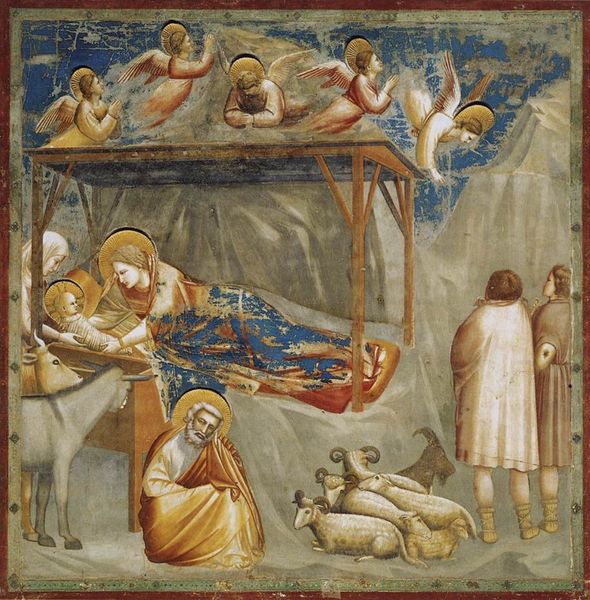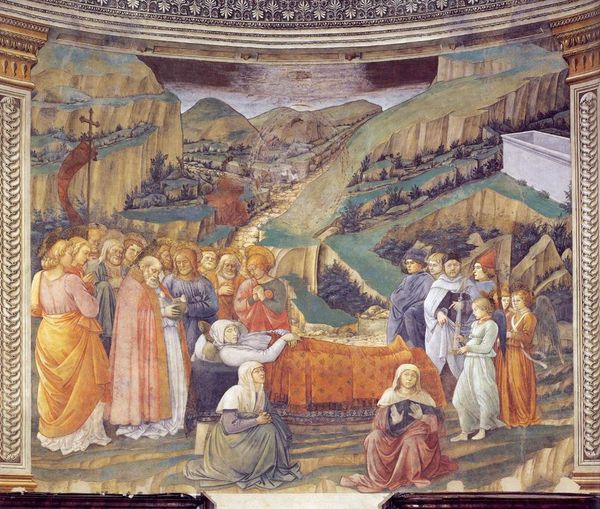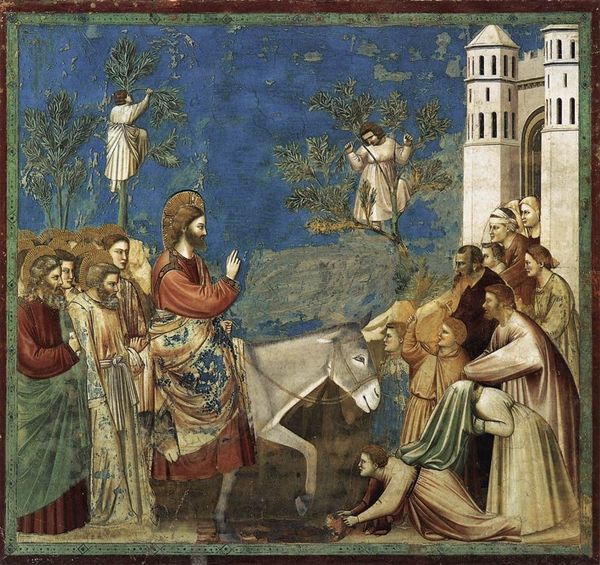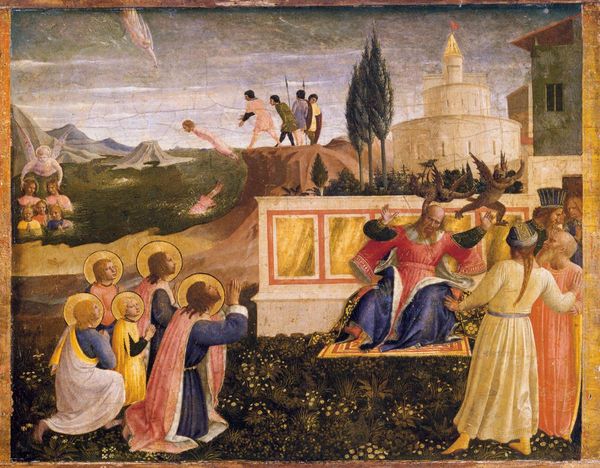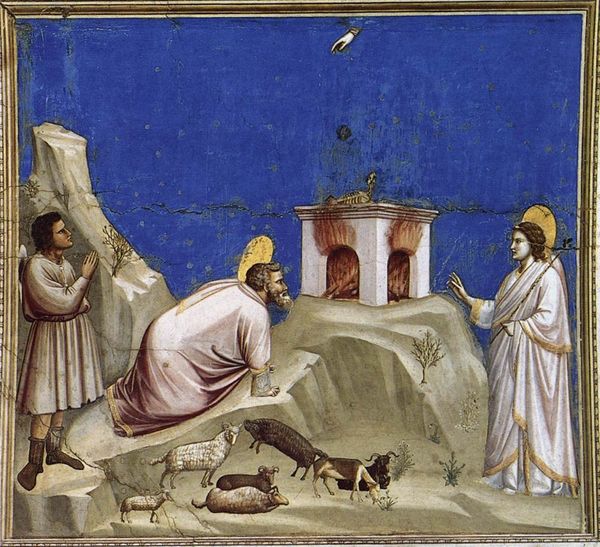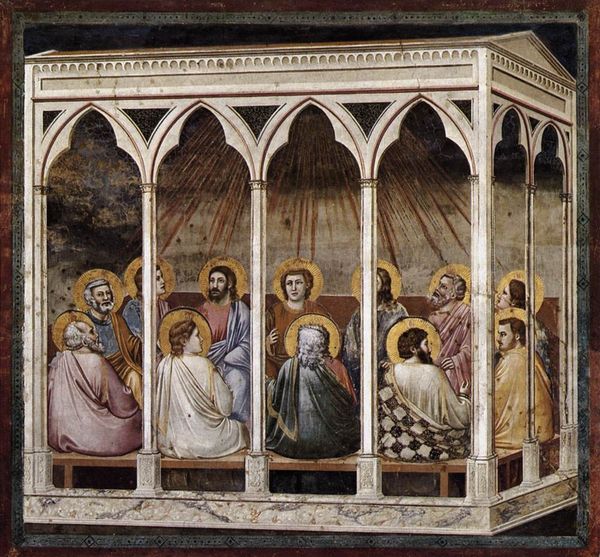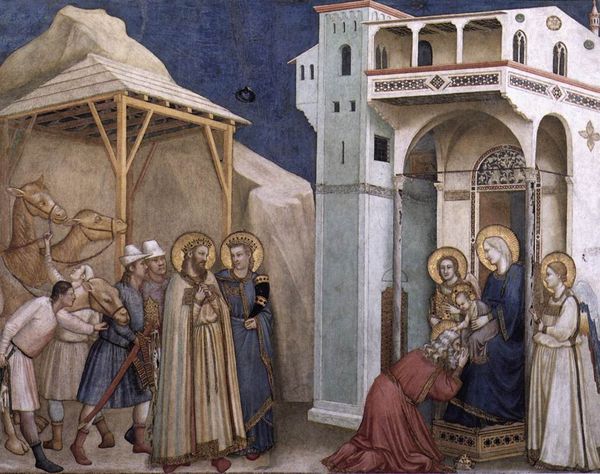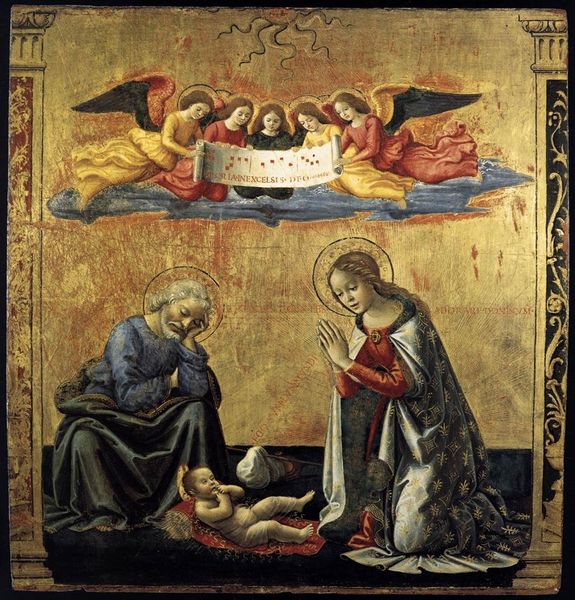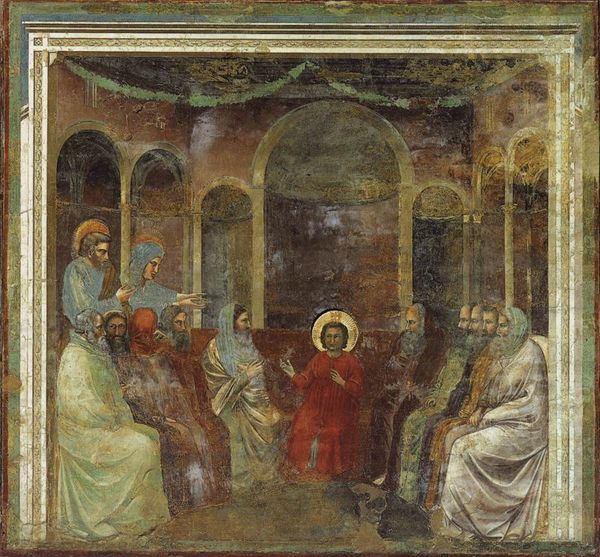
painting, fresco
#
portrait
#
medieval
#
narrative-art
#
painting
#
figuration
#
fresco
#
oil painting
#
jesus-christ
#
christianity
#
history-painting
#
italian-renaissance
#
christ
Dimensions: 200 x 185 cm
Copyright: Public domain
Giotto painted this fresco of the Resurrection, also known as Noli me tangere, in the early 1300s in Padua, Italy. It’s part of a larger cycle decorating the Scrovegni Chapel, a private religious space commissioned by a wealthy family. Giotto’s fresco departs from earlier, more stylized depictions of this scene by presenting it with a newfound sense of realism. You’ll notice how the figures inhabit a believable space, displaying emotions that resonate with the viewer. This shift was part of a broader move towards naturalism in art, reflecting a changing society where direct experience and observation gained importance. Religious art at this time served a crucial public role. It conveyed theological narratives, and also reinforced social norms. Patrons like the Scrovegni family used art to demonstrate their piety and status, contributing to the complex relationship between art, power, and social order. To understand this artwork, we can consult a range of historical sources, from theological texts to records of artistic patronage. Art history helps us appreciate how art reflects and shapes the world around it.
Comments
No comments
Be the first to comment and join the conversation on the ultimate creative platform.
